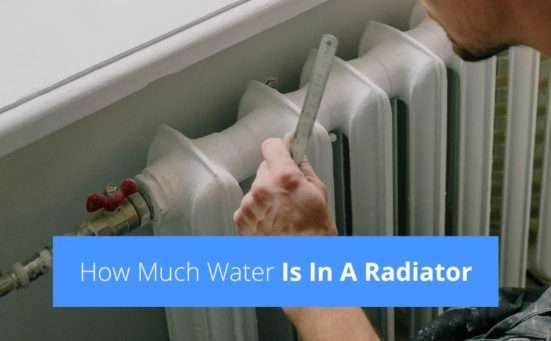 Last Updated: Apr 2024
Last Updated: Apr 2024 Best Electric Radiators 2024
The most cost-efficient way to heat your home is with central heating, however, if you have, say, a conservatory with no heat, or a draughty study, then you need an electric radiator. Or let’s imagine it’s midnight Saturday, and your boiler packs up, it’s -10 outside and you have elderly relatives or very young children come to stay. The emergency plumber won’t come out until Monday, if you’re just relying on the central heating to heat your home and your guests, you’re in a spot of bother.
The solution, and a good idea to have as a backup plan just in case of emergency, is an electric radiator. You could go for a fan heater, but they’re noisy and only heat a relatively small area, no, you need an electric radiator.
There are many electric radiators to choose from, and in all honesty there’s not much difference between them. With such a simple design and the amount of years they’ve been producing electric radiators, it’s hard to find a bad one. However, some are more reliable, and have better efficiency, and there are those more suited for moving around the house.
Where others are better for heating up a whole room, but whatever your needs we have the information you need to get the best electrical radiator for your home.
Best Selling Electric Radiators
- ♥ REDUCE YOUR ENERGY COSTS - 100% Energy Efficient - Our patented convection chamber draws cold air from the floor which then distributes warm air evenly throughout your room. The digital thermostat maintains a comfortable room temperature by turning the heating element on and off to reduce over spend.
- ♥ WEEKLY SCHEDULE OR INSTANT HEAT - You can alternate between an “instant heat mode” or quickly program a weekly cycle according to your preferences.
- 1.5kW MAXIMUM HEAT OUTPUT – Choose from 3 heat settings for complete flexibility during cold spells and winter months - 600W, 900W or 1.5kW
- 7 FINS – Designed for even heat distribution around your home, this model features 7 fins for improved performance
- Simple Installation: The Futura white oil filled radiator electric heater can be installed on any standard home building wall, which includes 4x wall brackets. Power Cable size 1.75m (cable located on the right side of the heater). Product Dimensions: L 81cm x D 8cm x H 59cm Approx. Weighing at 12.8kgs and comes with a standard UK 3 pin 13 amp power plug.
- Energy Saving: The Futura oil heater has 3 heating modes, comfort, economy and anti frost modes, which will help lower costs. The oil heater also enables you to set your desired temperature between 10°C to 35°C and with our eco auto open window detection - This is an automatic built in function which if the room heater detects a sudden drop of 5 degrees or more in room temperature it switches itself off. It heats up quickly and cools down slowly and as an advanced overheat cut out facility.
- Powerful Heating: This 2500W oil filled radiator features 11 powerful heating fins which quickly and efficiently warm and circulate hot air throughout your home, office, bedroom or living room. Heat just the space you need instead of your whole home with this energy efficient heater.
- 3 Heat Settings & Adjustable Thermostat: A fully adjustable thermostat and 3 heat settings of 2500W, 1300W and 1200W allow you to find and maintain the perfect room temperature.
- 𝐂𝐔𝐒𝐓𝐎𝐌𝐈𝐙𝐀𝐁𝐋𝐄 𝐇𝐄𝐀𝐓 𝐒𝐄𝐓𝐓𝐈𝐍𝐆𝐒 – CUQOO 2000w electric heaters for home features 3 adjustable heat selling. Choose from three heating settings – 750W, 1250W, and 2000W – tailored to your comfort needs, ensuring efficient and customizable warmth for any space.
- 𝐅𝐋𝐄𝐗𝐈𝐁𝐋𝐄 𝐈𝐍𝐒𝐓𝐀𝐋𝐋𝐀𝐓𝐈𝐎𝐍 – This electric radiator heater offers dual functionality with two supporters for both free-standing and wall-mounted options. Two wall-mounted holes on the back provide hassle-free installation, offering versatility in placement.
How Do Electric Radiators Work
Unlike the radiators used in central heating systems that rely on hot water to provide the radiators heat, electric radiators use an electric element to heat up a fluid(usually oil) to store the heat and spread it through the radiator. Most manufacturers now make oil free radiators as well, that use dry thermal heating elements like aluminium or ceramic stone that transfer the heat using convection and radiation. More on this in the buyers guide below.
There is also a newcomer to the electrical radiator scene,they’re called Infrared radiator panels and they work by heat transfer from object to object, which in layman’s terms means they heat the person or object and not the whole room. It’s like a modern day open fire but without the fire.
Not technically a radiator in the traditional sense but they do radiate heat so they are worthy of inclusion here.
So without getting too technical or scientific, let’s explain the 3 most common ways of transferring heat.
Heat Conduction
Conduction is how heat passes through solids, for instance how the heat from hot water passes through the metal of a radiator to heat a room. So things like metal, ceramic, copper, are good conductors, whereas other things are much less conductive and make good insulators like wool, foam etc…
Convection
This is the passing of heat through a fluid like water or air. When a fluid becomes hot it becomes less dense, this is why hot air rises. As it cools down it gets denser and sinks again.
This creates circulation and the heat is moved by the moving fluid.
Radiation
Radiation uses electromagnetic waves to transmit the energy. It can pass through air, and vacuums and only heat objects that can absorb it.
So most electric radiators use a combination of conduction and convection to create heat. Whilst infrared radiators use radiation. This is a more energy efficient means of heat and is cheaper to run, but as it is a new technology it is more expensive to install.
What Are The Benefits Of Electric Radiators
Let’s look at the benefits shared by both types of electric radiator and then get into specifics later.
Electric radiators provide fast, clean heat, many are portable, and lightweight allowing them to be easily moved from room to room wherever they’re needed.
Electric radiators can be programmed to specific temperatures, to the exact decimal point you require, unlike the central heating system where you turn the thermostat and it gets somewhere between 18-20 degrees.
An often overlooked benefit of an electric radiator is just how quiet it is, when compared with the gurgling and banging made by boilers and water filled radiators, electric radiators are virtually silent.
After the initial purchase price, there are no maintenance costs to worry about, no service costs, and as a rule, very few repairs either.
As they are run by electricity, have no exposed parts, and are a sealed unit, there is no chance of carbon monoxide poisoning using an electric radiator.
If environmental factors play a part in your decision making, electric radiators are a clean source of heat for your home. Compared with central heating which is often gas powered, electric radiators powered by wind turbines or solar panels are carbon neutral.
What Are The Disadvantages Of Electric Radiators
In certain situations, the electricity goes off, during a bad storm, for instance. Or high winds, or even a power cut. In these situations an electric radiator is useless, however so is a central heating system.
This is because central heating systems, even gas and oil based central heating systems, rely on electricity to pump the hot water to the radiators.
The average cost of a unit of electricity in the UK is 14.37p whereas the average cost of a unit of gas is 3.80p so it costs more to power electric radiators than to run a gas central heating system. However, when you factor in other running costs, like yearly boiler services, parts and labour costs, pipe work etc… that gas price is far higher than 3.80p per unit.
Another factor to be considered is, randomly plugging in electrical heating units like radiators can put a strain on your electrical system. So realistically you should have your wiring checked for safety before using an electric radiator for the first time. Most modern homes will already be up to standard but certainly with older properties it’s worth considering getting it checked professionally.
And generally speaking electric radiators have short power cords, this limits where they can be situated around the home.
Electric Radiators Buyers Guide
So we’ve covered the basics, now let’s look at what to consider before buying an electric radiator.
Size Is Everything
In general terms, the bigger the heater, the more power it requires, and the more it costs to run. That said, larger units tend to heat up more efficiently, converting that power to heat faster, and using less power than say, a smaller unit trying to heat a large space.
For instance, you’ll probably only need a small radiator in a bathroom, but in a large room a much larger radiator will be required to heat the room efficiently.
So the bottom line is always go for the correct size radiator for the size of space you want to heat.As a general guide, an outside office or small room will be fine with a 600-800 watt radiator. An average size room will probably be ok with a 1500-2000 watt radiator, and a large room or conservatory will need the higher wattage radiators.
That said, there are different designs that will throw out great heat, at lower wattage. Manufacturers have developed new ways to improve how the heat is distributed.
Oil Filled Radiators Or Oil Free
As stated above, the difference is oil filled radiators use the oil to store the heat and oil free radiators use either aluminium or ceramic stone to hold the heat. Oil filled radiators have been around for many years so it’s safe to say they are reliable, cost effective and heat up and maintain consistent temperatures.
Oil free radiators however, heat up faster, weigh less so are easier to move from room to room, cost effective and there’s no chance of oil leaking out as the unit ages.
Infrared Radiators
These are a relatively new innovation, and actually don’t look anything like a radiator. They are usually wall mounted, and can be disguised as mirrors, or pictures, but can be ceiling mounted too.
Controls
Electrical radiators all come with a thermostat to control temperature and output. Some have simple dials and/or switches, others will have digital display pads. You might even like one with an in built timer control.
Running Costs
The cost of running an electrical radiator is dependent on the size,and your hourly rate charge from your electrical supplier. But usually they range from 8.6- 36p per hour but bear in mind that the more efficient designs can cut running costs by as much as 30%.
Design
Not only are there various types of electrical radiators but within the types there are various designs. Some are thin, tall, small, bulky,portable, wall mounted and more besides. All of which will factor into your decision making process before buying an electrical radiator.
Where Can You Buy Electric Radiators
Most reputable electrical retailers sell electric radiators including:-
Appliance Direct, Agos, B&Q, screwfix, Amazon, and many more.
How Much Is An Electric Radiator
The price of an electric radiator is dependent on many different factors, the main 4 being, type, size, wattage,and design.
Starting with oil filled radiators, the price range is somewhere between £21-£1360. Oil free electric radiators range between £20-£350. And Infrared electric radiators range from novelty patterned leg warmers at £42 up to full length mirrors around the £1200 mark
As with all things the choice is yours and it is very much dependent on your budget, taste and style.
Frequently Asked Questions
Apart from fan heaters, there are 3 types of electric radiators, oil filled radiators, oil free radiators, and infrared radiators.
Infrared heaters heat a room faster than conventional radiators and use less energy.
You can get plug in electric radiators and you can also get permanent electric radiators that should be wired in by a professional electrician.
Infrared panels are the most economical electrical heating system but they are also the most expensive to buy.
Always go for the highest power electrical radiator you can afford, because in the long term the higher powered unit will use less energy.
Whilst the idea sounds attractive as it means you can disguise the radiator, it is not advisable to cover an electric radiator. This is because as the radiator heats it passes that heat to the air around it, any cover will interfere with this heat flow.
Electric heating is cheaper than gas because you can isolate electric radiators to only heat where needed but gas systems need to pass hot water through the whole system.
1000 watts 18.54p per hour,
1200 watts 22.25p per hour,
1500 watts 27.81p per hour,
2000 watts 37.08p per hour,
2500 watts 46.35p per hour,
3000 watts 55.62p per hour.
No, painting electric radiators can be dangerous because paint can leak into the wiring and also prevent the thermostat from working.
Modern plug in radiators are safe as they have to meet industry standard safety measures.
When they heat up, oil filled electric radiators tend to make sound often described as clicking, crackling or popping, do not be alarmed. This is quite normal and is caused by the expansion of the fluid as it heats up.
A 2 KW or 2000 watt will heat a room of around 20m2 this is an average living room.
No, the oil is used as a medium to pass the heat through, it is not consumed, and the radiator is a sealed unit, so the oil will not evaporate, or burn. It remains in the radiator at all times.
No as the oil is not burned but simply used as a heat conductor, the oil produces no gas of any kind.









